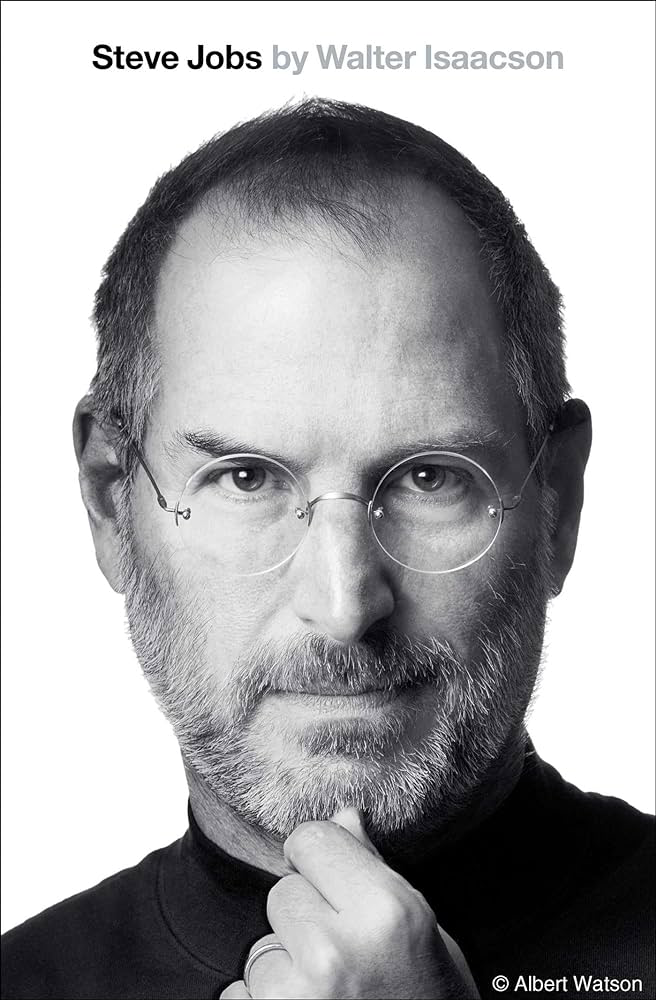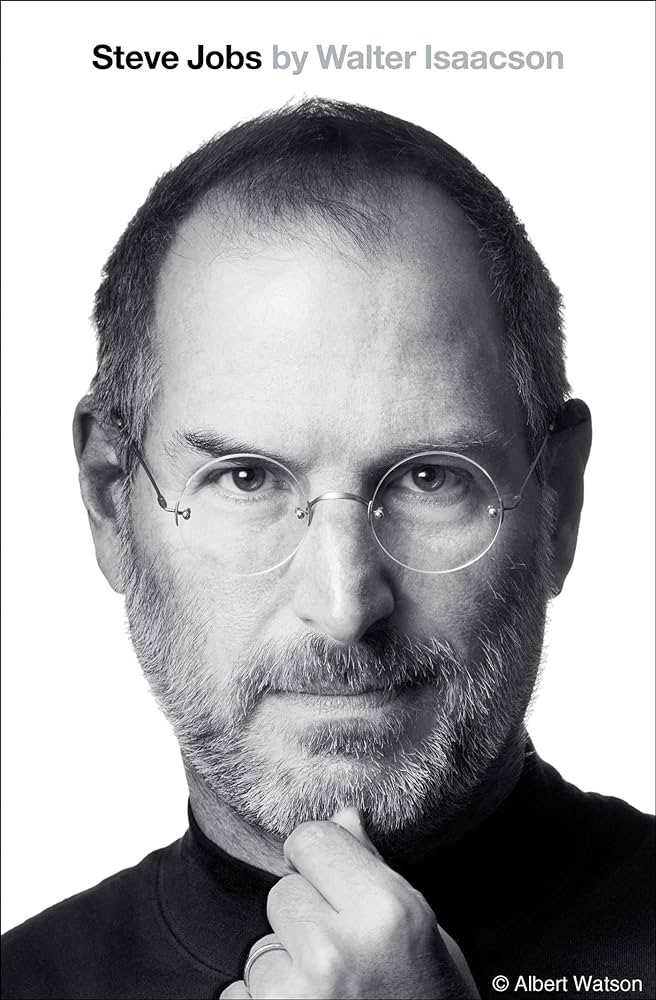
Walter Isaacson’s “Steve Jobs” is a riveting biography that offers an in-depth look at the life and legacy of one of the most influential figures in technology and business. Published in 2011, this meticulously researched and beautifully written book provides a comprehensive portrait of Steve Jobs, capturing his genius, vision, and the complex personality that drove his extraordinary achievements. For anyone interested in leadership, innovation, and the history of Silicon Valley, this book is a must-read.
The Isaacson Approach
Isaacson’s approach is both thorough and engaging. Drawing from more than forty interviews with Jobs conducted over two years—as well as interviews with more than a hundred family members, friends, adversaries, competitors, and colleagues—Isaacson crafts a narrative that is as compelling as it is informative. The book delves into Jobs’ professional triumphs and personal struggles, offering a balanced view of a man whose passion and drive left an indelible mark on the world.
The Duality of Genius
One of the central themes of the biography is the duality of Jobs’ genius. Isaacson doesn’t shy away from portraying Jobs’ often abrasive personality and the ruthless pursuit of perfection that could alienate those around him. However, he also highlights Jobs’ unparalleled ability to foresee and create products that revolutionized industries, from personal computing to music, movies, and mobile phones.
Five Key Learning Points
1. Visionary Leadership
Jobs’ ability to envision the future and drive his team towards it is a recurrent theme in the book. He had an uncanny knack for knowing what consumers wanted before they did and was relentless in his pursuit of bringing his vision to life. His leadership style, though often criticized for being harsh, was instrumental in Apple’s success.
Example: Isaacson details the development of the original Macintosh, showcasing Jobs’ insistence on simplicity and elegance, which led to revolutionary design and functionality. His refusal to compromise on his vision, despite pushback, ultimately set Apple apart from its competitors.
2. Relentless Pursuit of Perfection
Jobs’ pursuit of perfection was a driving force behind his success. He believed in the importance of every detail, from the aesthetics of a product to the user experience. This perfectionism, while sometimes leading to conflicts, ensured that Apple products were not just functional but also beautifully designed.
Example: The book describes Jobs’ obsessive attention to detail in the design of the iPhone, from the feel of the touch screen to the minimalist design. This focus on perfection helped create a product that redefined the smartphone industry.
3. Embracing Failure and Learning from It
Jobs’ career was not without its failures, but his ability to learn from mistakes and bounce back stronger was a key factor in his success. Isaacson highlights how Jobs’ ousting from Apple in 1985 was a turning point that led to his later triumphs with NeXT, Pixar, and his return to Apple.
Example: The acquisition of NeXT by Apple brought Jobs back to the company he founded. The technology developed at NeXT became the foundation for macOS, showcasing how Jobs turned a previous failure into a cornerstone of future success.
4. Innovation through Integration
Jobs was a master of integrating hardware and software to create seamless user experiences. He believed that controlling both aspects allowed for better innovation and higher quality products. This philosophy led to some of Apple’s most successful products.
Example: The creation of the iPod, and later the iTunes ecosystem, exemplifies Jobs’ commitment to integration. By controlling both the device and the platform, Apple revolutionized the music industry and created a new business model.
5. The Power of Design and Branding
Jobs understood the importance of design and branding in creating a strong connection with consumers. His focus on sleek, user-friendly designs and compelling marketing campaigns helped establish Apple as a premium brand.
Example: The iconic “Think Different” campaign is a testament to Jobs’ branding genius. It not only reinvigorated Apple’s image but also positioned the company as a leader in innovation and creativity.
The Witty Undertones
Isaacson’s writing style is both engaging and insightful. He balances the technical aspects of Jobs’ work with personal anecdotes and character studies, making the book accessible to a broad audience. The narrative is enriched with witty undertones that capture Jobs’ charismatic and sometimes contentious personality, making the book both informative and entertaining.
Final Thoughts
“Steve Jobs” by Walter Isaacson is an essential read for anyone interested in understanding the mind and legacy of one of the greatest innovators of our time. Isaacson’s thorough research and engaging storytelling provide a comprehensive look at Jobs’ life, capturing the essence of his genius and the impact of his work.
In a world where innovation and leadership are more critical than ever, Jobs’ story offers valuable lessons on vision, resilience, and the pursuit of excellence. Whether you’re a seasoned executive, an aspiring entrepreneur, or simply a fan of technology, this book offers profound insights that can inspire and inform your journey.
So, if you’re ready to dive into the life of a visionary who changed the world, grab a copy of “Steve Jobs” by Walter Isaacson. This book doesn’t just tell the story of a man; it illuminates the path to transforming ideas into reality.
